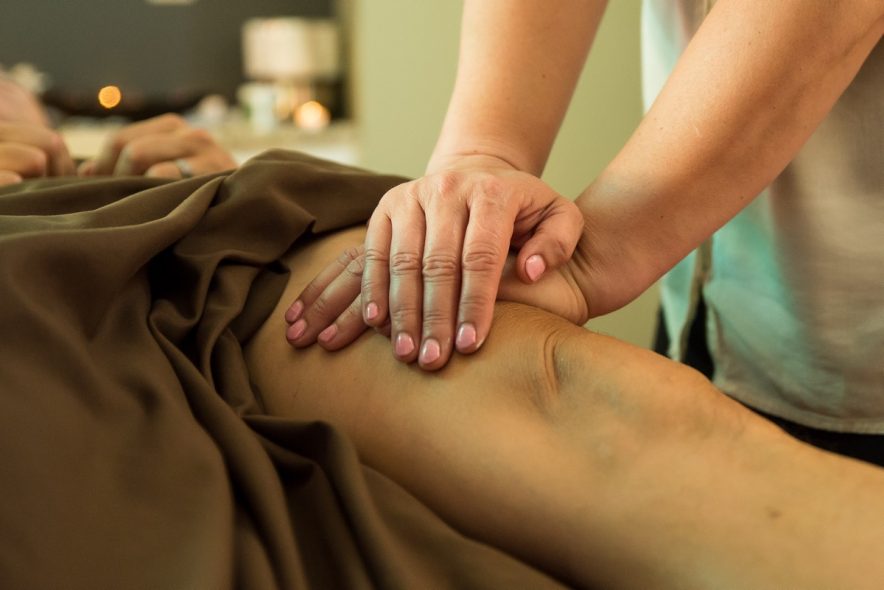Many athletes are very aware of the benefits that massages have to prevent injuries. Massage therapy can also play a key factor in faster recovery time, less scaring and adhesions and better flexibility and ranges of motions.
With most sports activities the athletes use the same muscle groups over and over again. For instance, runners use mainly their thigh muscles, especially the quadriceps, hamstrings and calves. Patients complain often that their Iliotibial band (IT) are tight and painful to the touch.
Massaging those areas and releasing the hip flexor muscles (iliacus and psoas major as well as all gluteus muscles) are oftentimes the right approach in pain management and preventive care. Finding a counter balance sport activity, like swimming or yoga, can be very helpful in loosening up the hypo tonicity in the muscles.
Stretching before and most important after sports activities are highly recommended and can help in preventing injuries as well as assist an athlete’s performance. Stretches will move the joint and lengthen the muscle, which in turn will give it more flexibility.
Pre-event and post-event massages, either been given directly at a sports event, or at the massage office, also play a critical role in avoiding injuries.
Pre-event massages are usually short massages given 24 hours or 30 minutes before the event. The purpose is to prepare the athlete for high-intensive activity. The massage stimulates the nervous system, which releases hormones and get the athlete into an alert stage, ready to perform. The increased blood circulation will warm up muscle tissue (which helps to prevent muscle pulls and tears) and it preps the body for functioning at its best. Competing in an event can be stressful and anxiety levels may rise up. Mental meditation and preparation rituals which may include massages can make a big difference.
In pre-event massages the massage therapist uses massage techniques like Effleurage, compression, petrissage, vibration, tapotement, ROM and Active Isolated Stretching. Short and quick massage strokes to the targeted area will hyped-up the athlete and get him mentally and physically readiness for performance.
Post-event massages have a different approach. The goal here is for the body to recover as soon as possible and to keep muscle fiber break down and injuries to a minimum. Massages can make a huge difference in how much and how long athlete’s will experience soreness.
After the event the overheated body may need to be cooled down with ice packs, hydrated and replenished with water and salt intakes.
Post-event massages assist with removing toxins and lactic acid that has been built up during the sport event and to reduce edema. It also assists in the recovery of diastolic blood pressure to its normal level.
Muscle cramping, hyperthermia and hypothermia, strains and sprains are all conditions been seen after a sport event. The experienced and professional massage therapist should be well prepared and may need to refer the athlete out to see a medical doctor.
Techniques for post-event massages are light compression, kneading, sliding strokes, joint mobilization and stretching.
Deep tissue massages, ROM and stretches are usually given in between events. They are wonderful tools to avoid injuries. They release muscle tightness, adhesions and scaring, increase flexibility, reset receptors in muscles, and help with posture.
Article written by Ruth Mueller, May, 2016

